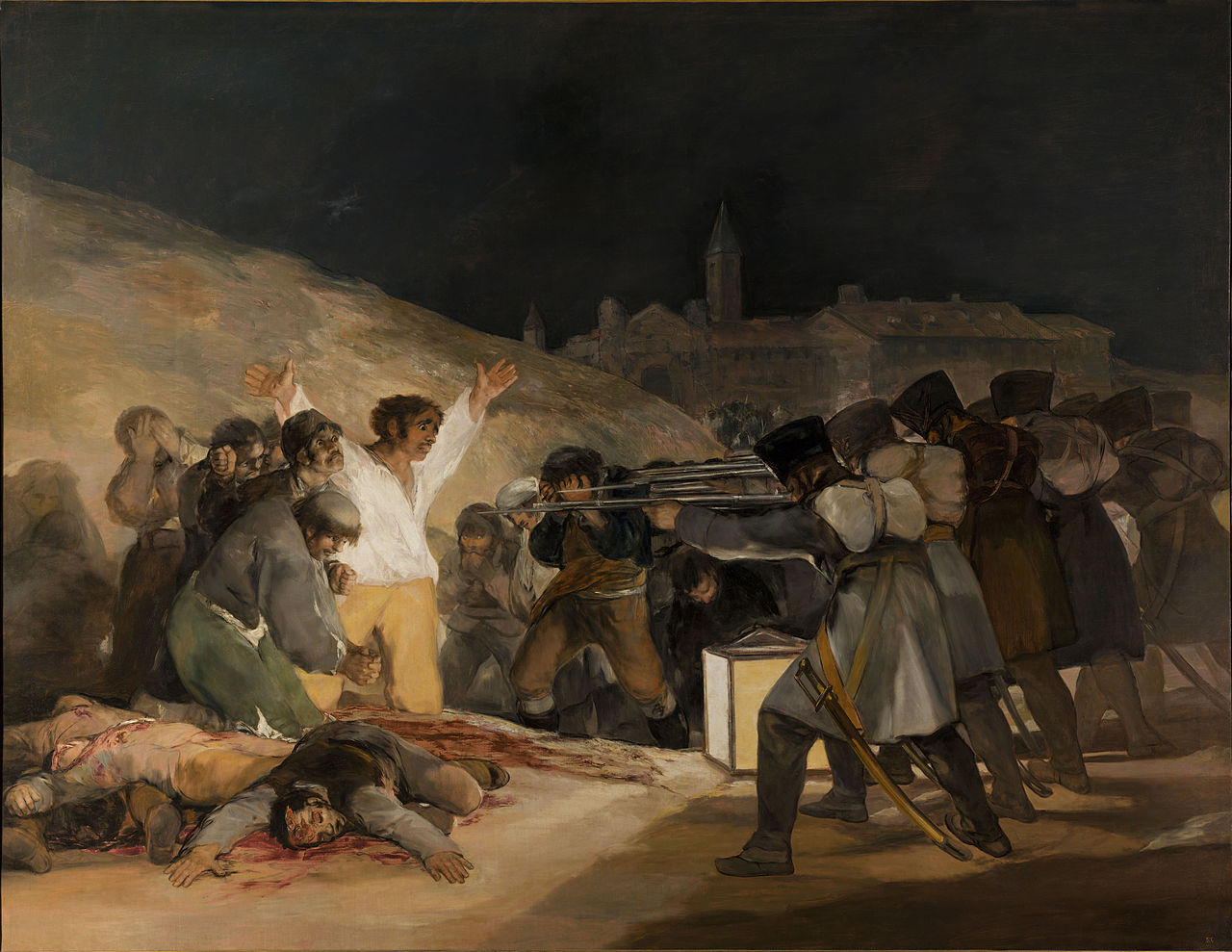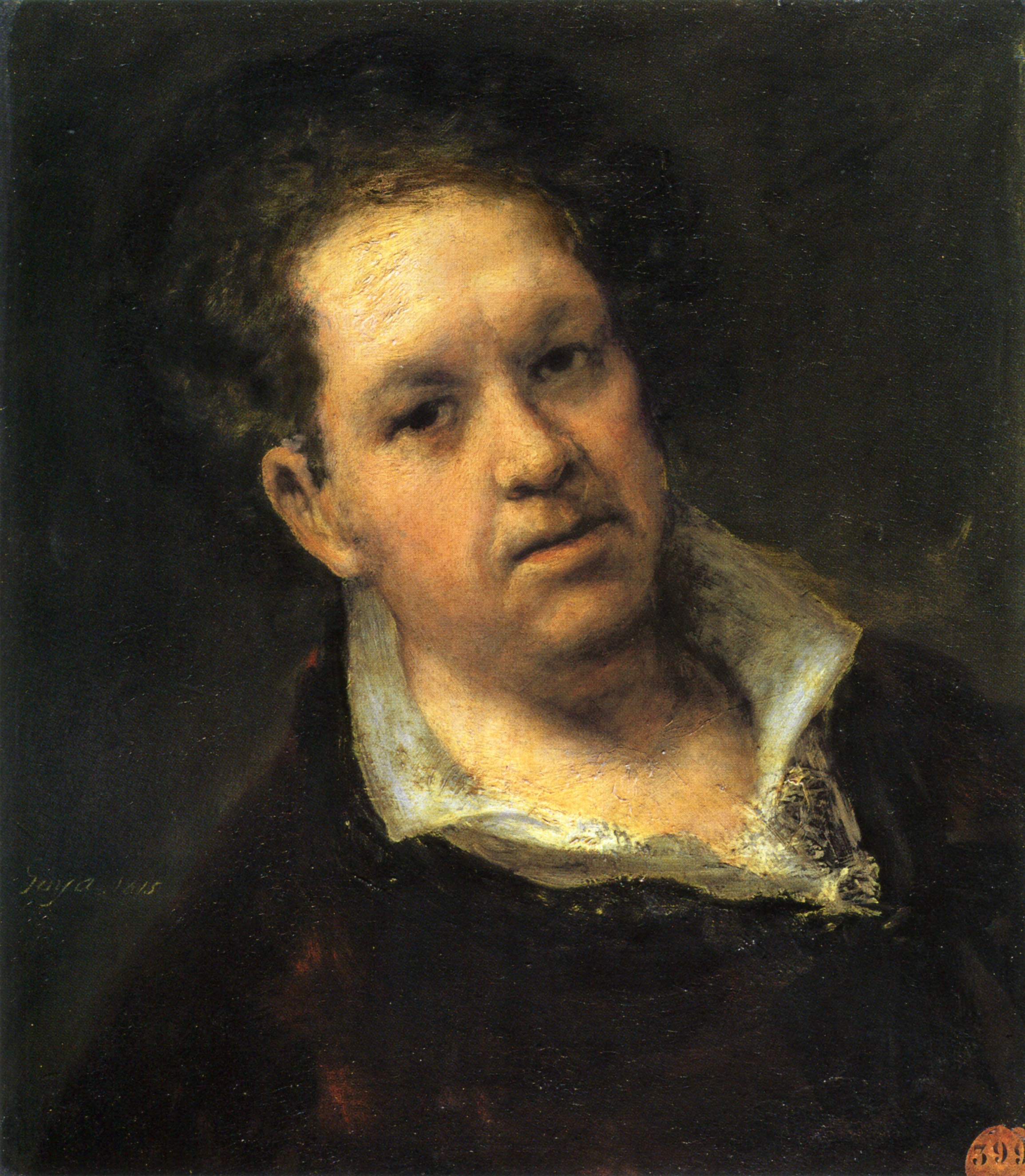Today's painting commemorated a dark moment in Spanish history which happened exactly on this day in 1808. To this day the painting has been one of the anti-war movement's artistic manifestos. It has inspired a number of other major paintings, including a series by Édouard Manet, and Pablo Picasso's Massacre in Korea and Guernica.
On May 3rd, 5000 Madrid civilians were executed for revolting against the invading Napoleonic French army. The painter depicts fear and defiance in the enlarged white eyes of the patriots still alive, some shielding their eyes and faces with their hands. Profuse blood seeps from the dead lying in groups all over the ground as the firing squad of well-equipped professional soldiers massed together (only their backs visible to the viewer), shoot at alarmingly close range the unarmed, shabbily dressed peasants. Strong light from a single lantern illuminates the face and body of one white shirted condemned man on his knees, eyes wide-open, leaning forward, arms outstretched, Christ-like, at the moment he is being shot. The powerless, innocent and grieving victims, next to be sacrificed, are hemmed in by a barren hill behind which looms the outline of barely visible city buildings, including a church. What is very important here is that those men are nameless heroes. It is the first depiction of this kind in modern art history.


 Francisco Goya
Francisco Goya